Innovation is alive and well in the business aviation market, with a host of brand new and revamped designs set to enter service over the next five years. We review the state of play for the key programmes
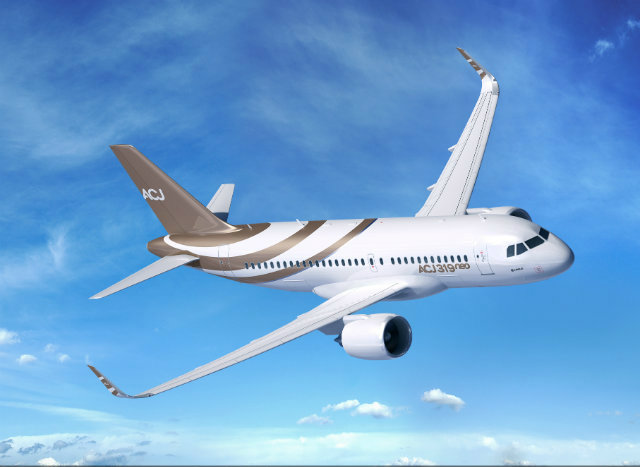
Airbus
Airbus is making steady progress with the two variants of its ACJ320neo corporate jetliner family, and the re-engined VVIP narrowbodies are gaining traction in the market with nine examples sold to date.
The first example, an ACJ320neo, was recently assembled and painted in a preliminary colour scheme at Airbus’s Hamburg, Germany maintenance, repair and overhaul facility. It will be flown to its UK customer, Acropolis Aviation, in the fourth quarter. The Farnborough-headquartered luxury charter company launched the VIP version of the A320neo in 2015, and selected the CFM International Leap-1A engine for the aircraft in 2017. The Pratt & Whitney Canada PW1100G engine is also available as an option on the ACJ320neo family.
Get all the latest NBAA coverage on our dedicated event page
Acropolis has appointed Swiss completions house AMAC Aerospace to outfit the aircraft with entry into service pegged for 2020. A second ACJ320neo is also due for green delivery at the end of 2018 to an unnamed customer. This aircraft will be outfitted by Comlux Completion in Indianapolis, USA.
Airbus is preparing to deliver the first example of the smaller ACJ319neo to German operator K5 Aviation in the second quarter of 2019. The charter and management company has appointed Dutch MRO firm Fokker Techniek to outfit the aircraft on behalf of its unnamed owner. The airliner will arrive at Fokker's facility in Woensdrecht in May 2019 for redelivery in early 2020, Airbus says.
While the narrowbody Neos are gaining traction, the same cannot be said for their widebody stablemate. The Rolls-Royce Trent 7000-powered ACJ330neo joined the corporate jet family in May 2017 and despite what Airbus calls “market interest” in the product, no orders have been secured for the 9,400nm (17,400km)-range aircraft to date.
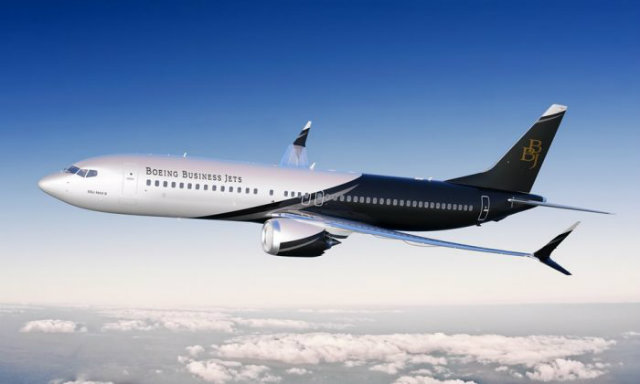
Boeing
Boeing has so far notched up 20 orders for its re-engined VIP 737 family. Final assembly of the first pair of BBJ Max 8s is now complete and installation of the narrowbodies’ PATS auxiliary fuel tanks is underway. The green aircraft are scheduled to arrive for outfitting in the fourth quarter at Comlux Completion in Indianapolis and Jet Aviation in Basel, Switzerland. The finished aircraft will be handed over to their undisclosed customers in the second half of 2019.
The 6,640nm-range BBJ Max 8 was launched in 2014 as an upgrade and replacement to the BBJ2. This will be followed by the BBJ Max 7 and BBJ Max 9 – the next-generation versions of the BBJ and BBJ3 – which are earmarked for green delivery in 2021 and 2019 respectively.
The BBJ Max 8 accounts for the bulk of the orderbook for the Leap-1B-powered trio, with 14 units, but Boeing expects the shorter Max 7 – now with four orders – to be the most popular BBJ eventually, due to its 7,000nm-range – 360nm longer than its stablemate. This pitches the VIP narrowbody against traditional ultra-long-range business jets including Bombardier’s Global 7500 and Gulfstream's G650/ER, but offers a much larger cabin.
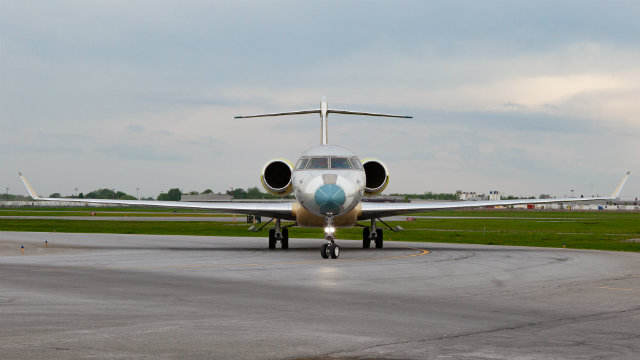
Bombardier
The Canadian airframer’s business aviation arm is experiencing one of the busiest periods in its history, with work currently underway on no less than five aircraft.
The Global 7500, which is the top of its range, is approaching the finishing line, with type certification of the ultra-long-range twin, formerly known as the Global 7000, anticipated as Flight International went to press. This major milestone will cap an eight-year development effort for the 7,700nm range GE Aviation Passport-powered aircraft – the longest-legged business jet on the market – with the five examples in the flight test programme logging around 3,000h. Bombardier is now ramping up production at its Downsview manufacturing facility in Toronto, while its completion line in Dorval, Montreal prepares the first aircraft for customer delivery later this year. With the longest cabin in the market at 16.5m (54ft) – about 2.5m more than the G650 and 3.5m longer than the Dassault Falcon 8X – Bombardier claims the Global 7500 is the only aircraft in its segment with "four customisable living areas".
Work on its latest family members, the Global 5500 and 6500, is also progressing well. After a highly-secret development effort, the pair were revealed in May as updated and longer-range versions of the Global 5000 and 6000.
Powered by the all-new Rolls-Royce Pearl 15 powerplant, certificated in January, the models feature a revamped interior, new wings designed by Mitsubishi Heavy Industries, and a true combined vision system – the first for a new business jet. Certification and service entry are pegged for 2019.
Bombardier says it will continue to build the Global 5000 and Global 6000, leaving the fate of the older variants to market forces.
While the Global family is consuming a large chunk of Bombardier’s business jet development funding, the lower end of its product line is not being ignored. In September, the airframer introduced an avionics upgrade for its Learjet 70 and 75, in a move that could help to stimulate demand for the slow-selling light and superlight types, themselves an update to the Learjet 40 and 45. The pair will be equipped with an enhanced version of the Garmin G5000 suite, with the bespoke software refinements developed in partnership with the US flightdeck specialist. Flight trials are under way on a Learjet 75 demonstrator in Wichita, Kansas, home to Bombardier’s test centre and Learjet manufacturing facility. Certification and service entry are scheduled for the second half of 2019. The upgrade will also be available as a retrofit for existing Learjet 70 and 75 operators.
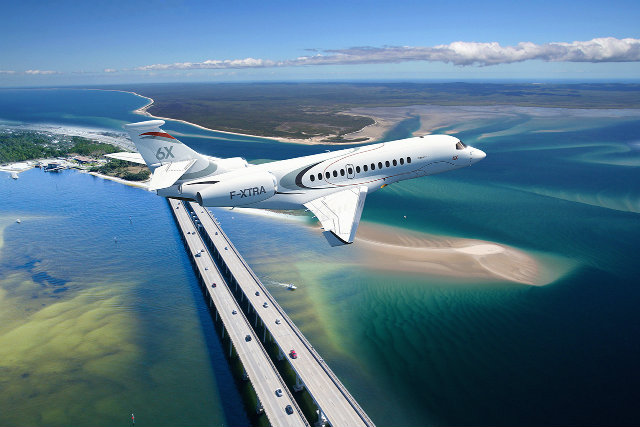
Dassault
With the woes and frustrations of the now cancelled Falcon 5X firmly in the past, Dassault is able to channel its energies into a replacement for the super-wide business jet, the 6X. The programme was unveiled in February, two months after the French airframer axed its predecessor, having run out of patience with Safran and its much delayed Silvercrest engine.
Dassault describes its latest model as “even better than the 5X”. Although it shares the same cabin cross-section, wings and most systems with its ill-fated forerunner, noticeable changes have been incorporated into the new design. The 6X will be powered by PW812D-engines, and will be 51cm (20in) longer and fly 300nm further – taking the range to 5,500nm at Mach 0.80. Dassault says it is “committed” to delivering the first 6X in 2022 and has pegged first flight for 2021.
Behind the scenes, Dassault is working on a number of new Falcons. While it remains tight-lipped on the segments it is seeking to address with the new models, one of the designs is likely to be a larger and longer-range variant of the 6X. This aircraft will allow Dassault to compete at the top end of the traditional business jet sector against the Global 7500, and the long-established, 7,500nm-range G650ER.

Epic Aircraft
Epic Aircraft is intensifying its efforts to bring its E1000 single-engined turboprop to market by early 2019. The $3.25 million, high-performance type is a certificated, factory-built version of the Epic LT kit plane, which is no longer offered by the Bend, Oregon facility. It has a maximum cruise speed of 325kt (600km/h), a range of 1,600nm and a ceiling of 34,000ft.
The E1000 is now in the final phase of certification testing with the two flight test articles having logged over 700h. Epic has secured 86 reservations for the Pratt & Whitney Canada PT6-67A-powered aircraft and is now preparing its manufacturing plant to support an annual production rate of 50 aircraft.
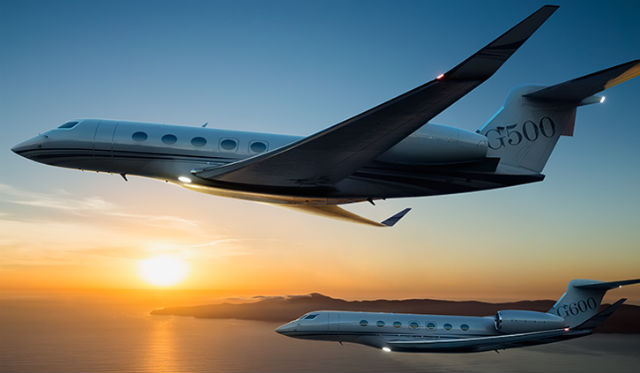
Gulfstream
Four years after unveiling its clean-sheet G500 and G600, the PW800-powered, super-large-cabin pair are sprinting towards the finishing line.
The G500 is slightly ahead in the race, with US type certification awarded on 20 July after a 5,000h flight test campaign. Service entry is scheduled within weeks. Gulfstream has, however, had to slow the rate of deliveries this year for its 5,200nm-range twinjet, after Nordam stopped making the nacelle for the PW800 in July. This action was a result of a long-running contractual dispute with Pratt & Whitney Canada over the cost of the engine development programme, leading Tulsa-based Nordam to file for Chapter 11 bankruptcy. Gulfstream stepped in to resolve the impasse in September with a commitment to take on the family-owned supplier’s debts resulting from the dispute, in return for the intellectual property in the nacelle design.
The feud is unlikely to impact the delivery rate for the G500’s larger and longer-range stablemate. With around 2,500h logged across its five-strong flight test fleet, the G600 is now in the final throes of its certification campaign. US approval for the 6,500nm-range aircraft is expected later this year, with customer deliveries to start in early 2019.
Behind the scenes, Gulfstream’s product development is continuing in earnest. The company is likely over the next year to launch an aircraft as an answer to the Global 7500, which has a longer cabin and flies further than its 7,500nm flagship, the G650ER. The new model could be a stretched G600 and carry the G750 branding. Gulfstream could also field a new long-range model further down the line, to fill the yawning gap in its six-strong product line between the super-midsize G280 and G500.
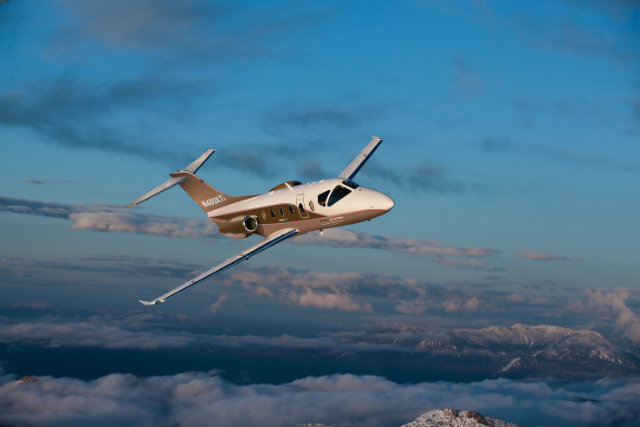
Nextant Aerospace
With two remanufactured business aircraft programmes successfully completed – the 400XTi light business jet and the King Air G90XT twin-engined turboprop, Nextant has turned its attention to a large-cabin aircraft. The 604XT was launched in 2017 as an upgrade to the Bombardier Challenger 604, introducing a Rockwell Collins ProLine Fusion flightdeck in place of the legacy model’s ProLine 4 suite. Flight testing is underway, with over 100h logged on the test aircraft. Certification and service entry is on track for the fourth quarter. The second phase of the remanufacturing programme was launched a year ago, introducing a redesigned cabin and a host of performance enhancements, including a wing extension, which boosts the twinjet’s range by up to 500nm. Nextant projects an 18- to 24-month certification timeframe for these enhancements.
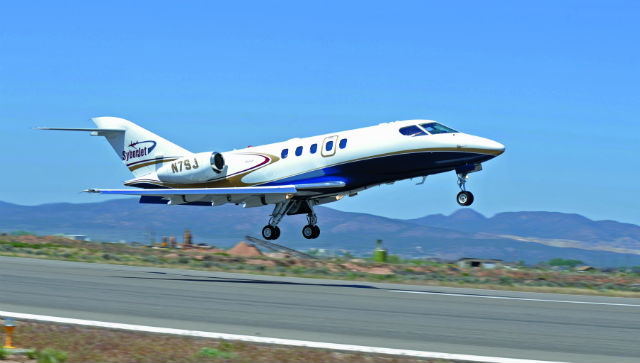
SyberJet Aircraft
SyberJet is planning to fly the SJ30i high-performance light business jet in the fourth quarter. The Williams International FJ44-2A-powered twin is an upgraded version of the SJ30-2, which was certificated in 2005 by its former owner, Emivest Aerospace. Four examples were delivered and remain in service. The programme was acquired in 2011 by SyberJet’s parent company, MTI, whose subsidiary, Metalcraft Technologies, was the aft fuselage supplier for the aircraft. The main feature of the 2,500nm-range SJ30i is a new avionics suite called SyberVision, which is based on Honeywell’s Primus Epic 2.0 system. The SJ30i's flight-test campaign is expected to take a year to be completed. The SJ30i fleet will consist of the five unsold and incomplete units – serial numbers 9, 11, 12, 13 and 14 – that MTI acquired from Emivest. Serial number 15 will be the first aircraft to be wholly produced by SyberJet, and the initial example of the airframer's new baseline model – the SJ30x – featuring more fuel-efficient, higher-thrust FJ44-3AP-25 turbofans. First flight of the $8.8 million aircraft is scheduled for mid-2020, leading to certification and service entry in 2021.
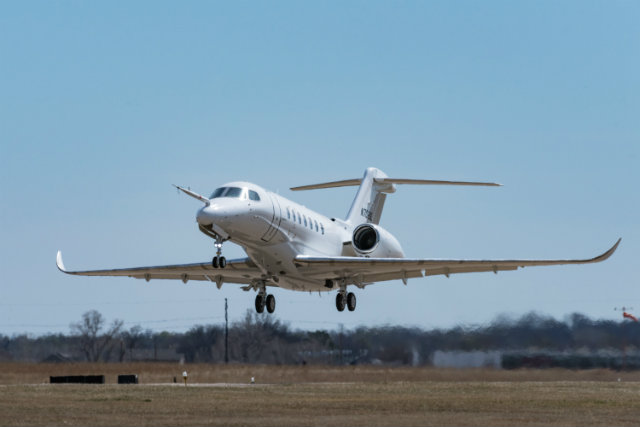
Textron Aviation
Textron Aviation was expected to secure type certification for its flagship Cessna Citation Longitude business jet as Flight International went to press. While deliveries of the super-midsize type are scheduled to begin during the fourth quarter, the airframer still has to address a certification hiccup related to the Federal Aviation Administration's flammability requirements for its centre fuel tank.
The agency recently granted Textron an exemption from those requirements until January 2020, buying the airframer some 15 months to work on a permanent fix. The company says the additional compliance testing and subsequent modification will have "minimal impact" on the Longitude and its customers.
The Hemisphere programme meanwhile remains stalled as Textron awaits information about Safran's redesign of the high-pressure compressor in the Silvercrest engine that has been selected to power the large-cabin jet. Testing is expected to be wrapped up in July 2019, when Textron will have the data it needs to inform a go-ahead decision. Despite the setback, the airframer says it remains committed to the 12-seat, 4,500nm Hemisphere, the biggest aircraft ever launched by Textron's member brands, which since 2014 have included Cessna and Hawker Beechcraft.
At the other end of the business aircraft spectrum, development of Textron's turboprop pair – the single-engined Denali and SkyCourier twin – is progressing along similar timeframes. Both aircraft are expected to make their debut flights in mid-2019 and achieve certification about one year later.
Four test fuselages have so far been built for the eight- to 11-seat Denali – the company's answer to the top-selling Pilatus PC-12NG and high-performance Daher TBM 930. Powered by a GE Aviation Catalyst turboprop, the Denali is projected to have a 1,600nm range and cruise at 285kt.
FedEx has already ordered up to 100 SkyCouriers, which Textron is marketing as both a cargo and passenger aircraft. Powered by PT6A-65SCs, the aircraft will be capable of carrying 2,720kg (6,000lb) of cargo or 19 passengers (or a mix of both) and will have a range of up to 900nm.
Get all the latest NBAA coverage on our dedicated event page
Source: Flight International






















